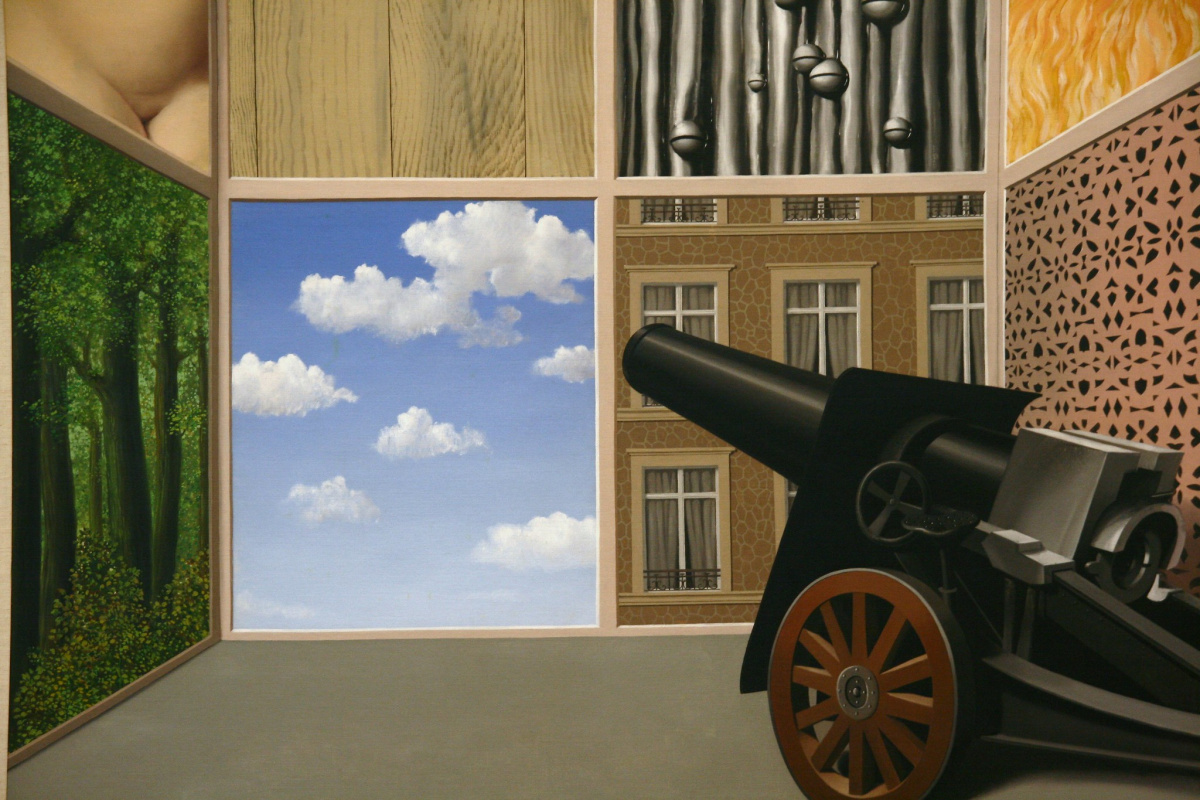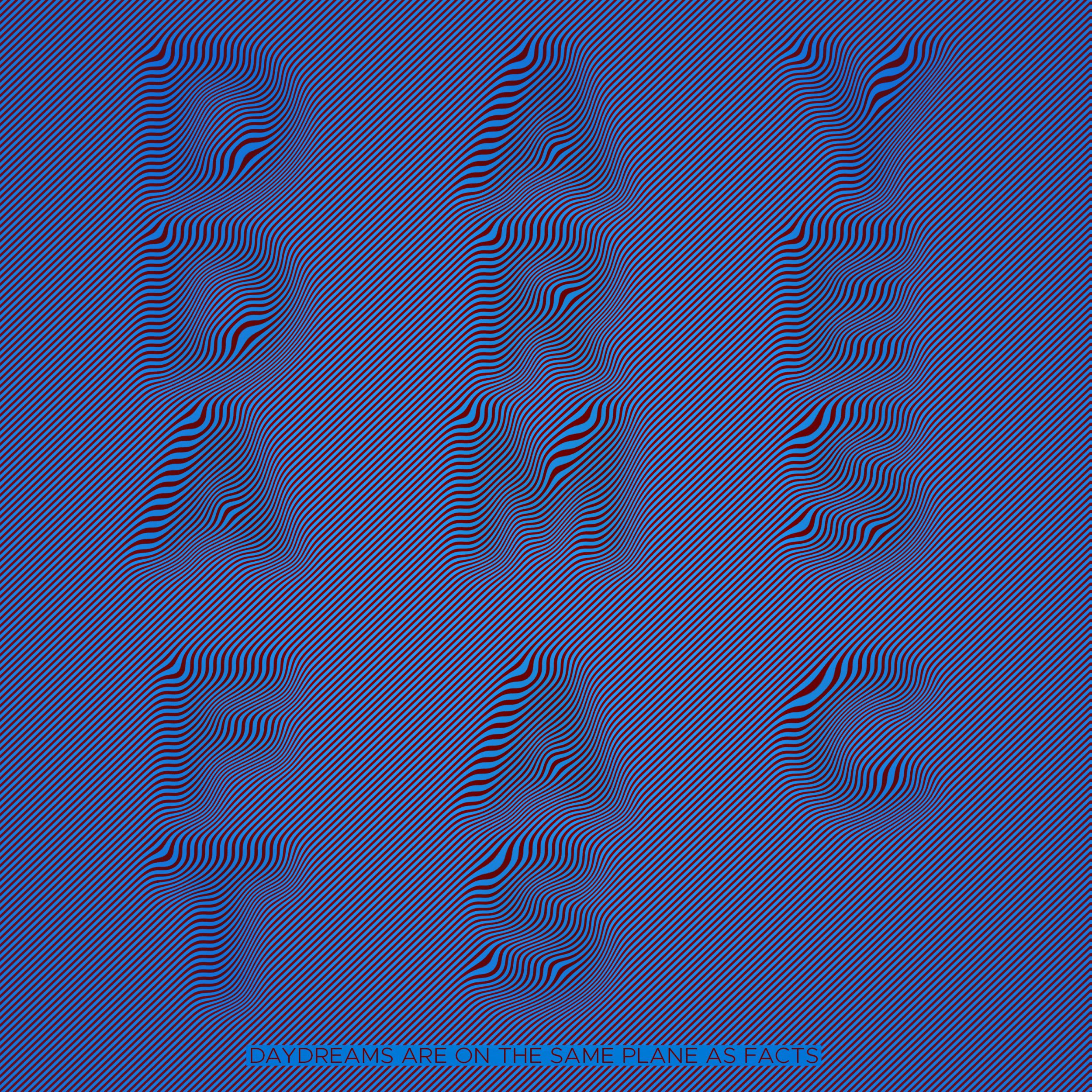
Listening at the Threshold
What is real and what is imagined? In her text inspired by a Laurie Anderson lecture, our writer thinks of listening as a possibility to become a stranger to oneself.
I put on my headphones and press play. Laurie Anderson’s «Norton Lectures» are about to start, at 23:00 Berlin time. It’s dark outside, and only a tiny table lamp illuminates the room where I am sitting, on a couch, with a cup of tea which I will forget to drink, because I am getting lost in a state of listening and watching that lets me forget where I am.
«Where am I? What time is it?»
This is a recurring question that Laurie Anderson asks in her performance lecture. She sits in front of a green screen, on which the listener observes a variety of moving images: a car driving through the night with snowflakes constantly hitting the front screen, driving into nothingness, getting lost. This is a recurring theme in the worlds she creates in VR such as Chalkroom (2017), which was created in collaboration with the artist Hsin-Chien Huang.
Floating Consciousness
The noises, music, and above all, Anderson’s voice, are leading me in and out of stories, like a stream of consciousness. Real and speculative worlds overlap and are weaved into each other at a slow pace, moving forward without linearity, dissolving in so many open threads and in dead ends, and capturing me on a deep-felt level.
Listening with Laurie Anderson is listening at the threshold – between dreaming and being awake, between the spoken and the unspeakable, between remembering and forgetting. It is about a state of listening in which the imagined and the real blur.
Anderson’s Chalkroom, as well as her «Norton Lectures», create a world of simultaneous noises and visuals that never synchronize, and thus, what I experience as a listener never synchronizes with what is actually heard, or seen. Instead, I find myself lost, flying through space (or falling?), at the threshold of the known and the unknown. Her practice is to create (often eerie) wonder and surprise, about the things we remember, or the things in life that we tend to forget. Listening at the threshold means becoming a stranger to oneself, or of recognizing oneself as an other.
Listening with Laurie Anderson is entering a space where one does not usually allow oneself to go, moving off-track, moving at an awkward speed, thinking things that are not speakable.
«When someone asked me: who are you talking to in your songs? I replied: I am talking to the part of you that never speaks».
Words Come and Go
Fast forward: the next day, I am sitting alone in the car at the end of an impasse I haven’t encountered before, unsure of how I landed here. I stare out of the window, realizing that I was caught in a kind of daydream, which had already started the night before while listening to Anderson’s storytelling. I am still wrapped up in the sonorous feel of her voice and in my head I am still listening to chains of words, this time though not as words, but as rhythmic noise, merging with my own imagination. And the realization that «my» voice may be someone else’s voice – that voice is never simply owned.
Listening at the threshold means humble listening: memories, dreams, other people's words and stories are always treated by Anderson as fluid, affective assemblages. As part of her storytelling, they just pass through, and although they are framed – through sounds, video, effects, filters – they are never simply captured; she does not own them, she only temporarily becomes-with them, and lets them go. It resembles the way in which Anderson uses technology: to constantly shift modalities of sensation, and to challenge how we know through sound and vision.
When she modulates her voice in the famous song «Oh Superman!» (1981) to become robotic, or when, in her recent «Norton Lectures», her mouth becomes part of a moving cut-up collage featuring the head of John Cage, speaking his words. Using technology becomes yet another form of storytelling, and her shifting of technological parameters becomes an aesthetic practice of blurring the boundaries of human and non-human, reality and dream: «Daydreams are on the same plane as facts, as with the Edison phonograph», she says. In this in-between state new stories are created, and new perceptions become possible.
«Sonic Vignettes» is a Norient Special discussing sound: one fragment, one experience, recording, one viral video, stream, one monograph or encounter at a time – in all its depth, its historical and affective ramifications, with the finest expertise in Sound Studies. Initiated by Holger Schulze, Rolf Großmann, Carla J. Maier, and Malte Pelleter, published as a monthly column.
Biography
Published on October 25, 2021
Last updated on April 02, 2024
Topics
A generative practice that promotes different knowledge. One that listens is never at a distance but always in the middle of the sound heard.
Does a crematorium really have worst sounds in the world? Is there a sound free of any symbolic meaning?
How does the artits’ relationship to the gear affect music? How to make the climate change audible?
Special
Snap


